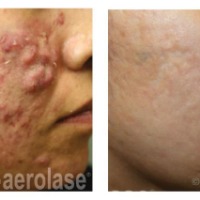One of the most popular treatments today, BOTOX was first FDA approved for non-cosmetic use in 1989 and later in 2002, it received FDA approval for cosmetic use. In the aesthetic sphere, BOTOX treats wrinkles and fine lines in the forehead, Crow's Feet, and neck bands. A little known fact is that BOTOX was originally explored in the 1960's as an option for treating strabismus, or crossed eyes. And although the vast majority of BOTOX patients get it for cosmetic reasons, there are quite a few that are exploring BOTOX for treatment of conditions such as hyperhidrosis, migraines, or flash back to the beginning, lazy or crossed eyes.

Model Photo
BOTOX is a botulinum toxin A - a neurotoxin that binds to nerve endings and when injected into the muscle, it relaxes and paralyzes the muscle to smooth out the skin above. This makes the treatment ideal for wrinkles and fine lines in the face. However, due to the drug's capability to relax muscles, many physicians are turning to BOTOX for treating patients for issues other than wrinkles. Here are 3 popular non-cosmetic BOTOX treatments:
- Hyperhidrosis
A big concern for patients as we move into summer is hyperhidrosis, which is when the body produces excessive sweat. BOTOX or Dysport works by blocking signals from the brain that trigger the sweat glands and effectively stops the sweat from being produced. Mainly used to treat sweat glands under the arms, other areas that may be treated are the face, neck and chest. - Migraine Treatment
The use of BOTOX to treat migraines received FDA approval in late 2010. For patients that suffer from chronic migraines, BOTOX may offer up to 3 months of relief where previous medications could not help. While it is unclear how BOTOX actually treats migraines, it is speculated that it works by blocking a specific protein that signals pain to the brain. Injections into the head, neck, and shoulders and there is no downtime. - Lazy or Crossed Eyes
Recently seen on The Doctors, the use of BOTOX may help correct strabismus in children to certain adults. Pediatric ophthalmologist Dr. David Granet explains BOTOX interferes with how the nerves communicate with the muscles of the eye. The eyeball has 3 essential muscle pairs that keep it straight but when one is failing, it's partnered muscle can be stretched, which may lead to permanent damage. A minute amount of BOTOX may be injected into the over-worked muscle of the eye to help relax it, allowing the weaker muscle to work.
It is imperative to seek treatment with a trained physician who has experience with using BOTOX for these conditions. It is also important to remember that the effects of BOTOX are temporary and re-injection will be necessary after 3-6 months. To get the best treatment possible, be sure to discuss other options that may offer permanent results.







